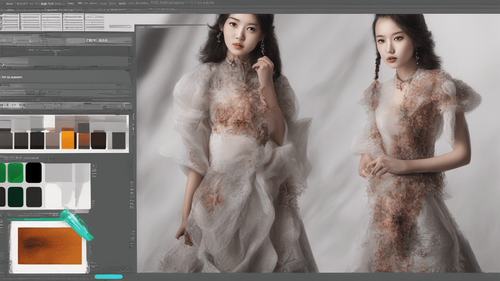
Artificial Intelligence (AI) has transcended its role as a tool for automation and prediction and has ventured into the realm of creativity. In this article, we delve into the captivating domain of AI to draw images, where algorithms and neural networks are harnessed to generate stunning visual art pieces. Discover how this technological marvel is revolutionizing the creative process, opening new avenues for artists, designers, and enthusiasts alike.
AI to Draw Images: A Technological Marvel Redefining Creativity
AI, an acronym for Artificial Intelligence, refers to the simulation of human intelligence in machines. It has evolved from performing routine tasks to exhibiting remarkable feats of creativity. AI's ability to draw images is powered by advanced machine learning algorithms and deep neural networks. These algorithms analyze vast datasets of images, learn patterns, and generate visually striking compositions that blur the lines between human and machine-generated art.
Understanding Generative Adversarial Networks (GANs)
Generative Adversarial Networks, or GANs, lie at the heart of AI-generated images. GANs consist of two neural networks: the generator and the discriminator. The generator crafts images, while the discriminator evaluates their authenticity. Through a continuous feedback loop, GANs progressively refine their output, resulting in remarkably authentic and aesthetically pleasing images.
The Intricacies of Neural Style Transfer
Neural Style Transfer (NST) is a captivating technique within the realm of AI-generated art. By combining the content of one image with the style of another, NST produces captivating amalgamations that often resemble the work of renowned artists. AI-powered algorithms analyze content and style features, creating a harmonious fusion that showcases the artistic essence of both.
Applications of AI-Generated Images
The applications of AI-generated images are as diverse as they are promising. From aiding designers in ideation to providing innovative marketing materials, AI-generated art is reshaping industries. In e-commerce, AI-generated product images offer a streamlined way to showcase merchandise. In architecture, AI can envision spatial designs, translating concepts into visual marvels.
The Ethical Landscape: Who is the Artist?
As AI-generated art gains prominence, ethical questions arise. Who should be credited as the artist—the human programmer or the AI? The debate surrounding AI's role in creative expression is a captivating topic that invites contemplation on the essence of artistry and authorship.
Challenges and Limitations in AI-Generated Art
While AI to draw images showcases remarkable capabilities, it also faces certain limitations. The generation of truly original and groundbreaking art remains a challenge. AI-generated images may sometimes lack the emotional depth and nuanced creativity associated with human-created masterpieces.
AI's Evolution in the Art World: A Historical Perspective
The integration of AI into the art world is not a recent phenomenon. Artists and technologists have been experimenting with AI-generated art since the mid-20th century. The journey from early algorithmic art to today's sophisticated neural networks is a testament to human ingenuity and technological progress.
The Collaborative Symphony: Human-AI Co-Creation
Contrary to the notion of AI replacing human creativity, AI often acts as a collaborator, enhancing human artistic endeavors. Artists can harness AI tools to explore uncharted territories, experiment with novel techniques, and amplify their creative expression.
FAQs about AI to Draw Images
Can AI-Generated Art Rival Human-Created Art?
AI-generated art possesses its own charm, but it's not a direct replacement for human creativity. While AI can mimic styles and patterns, the intangible human touch remains unparalleled.
Is AI to Draw Images Limited to Digital Art?
No, AI-generated art extends beyond digital platforms. It has influenced physical art forms like painting and sculpture, where AI aids artists in ideation and creation.
How Can Artists Embrace AI in Their Creative Process?
Artists can incorporate AI tools in various ways: from using AI-generated sketches as starting points to collaborating with AI algorithms to explore new horizons.
What Are Some Famous Examples of AI-Generated Art?
Notable examples include "Edmond de Belamy," an AI-generated portrait auctioned at Christie's, and "AICAN," an AI that creates abstract artworks.
Will AI Eliminate the Need for Human Artists?
AI augments the creative process, but the essence of human artistic expression is irreplaceable. AI and humans coexist, each contributing a unique perspective.
How Can AI-Generated Art Inspire Innovation?
AI-generated art sparks innovative thinking across industries. By pushing boundaries, AI inspires designers, engineers, and creators to explore novel approaches.
Conclusion: The Dawn of a New Artistic Frontier
AI to draw images signifies the convergence of technology and creativity, unveiling a new chapter in the art world's evolution. As AI continues to evolve, its capacity to generate captivating visual art promises to reshape artistic landscapes and stimulate fresh waves of inspiration. Embracing AI's potential while preserving the essence of human creativity is the key to unlocking unprecedented artistic horizons. Witness the harmonious dance between algorithms and imagination, where innovation and tradition coalesce, giving rise to a remarkable era of artistic expression.